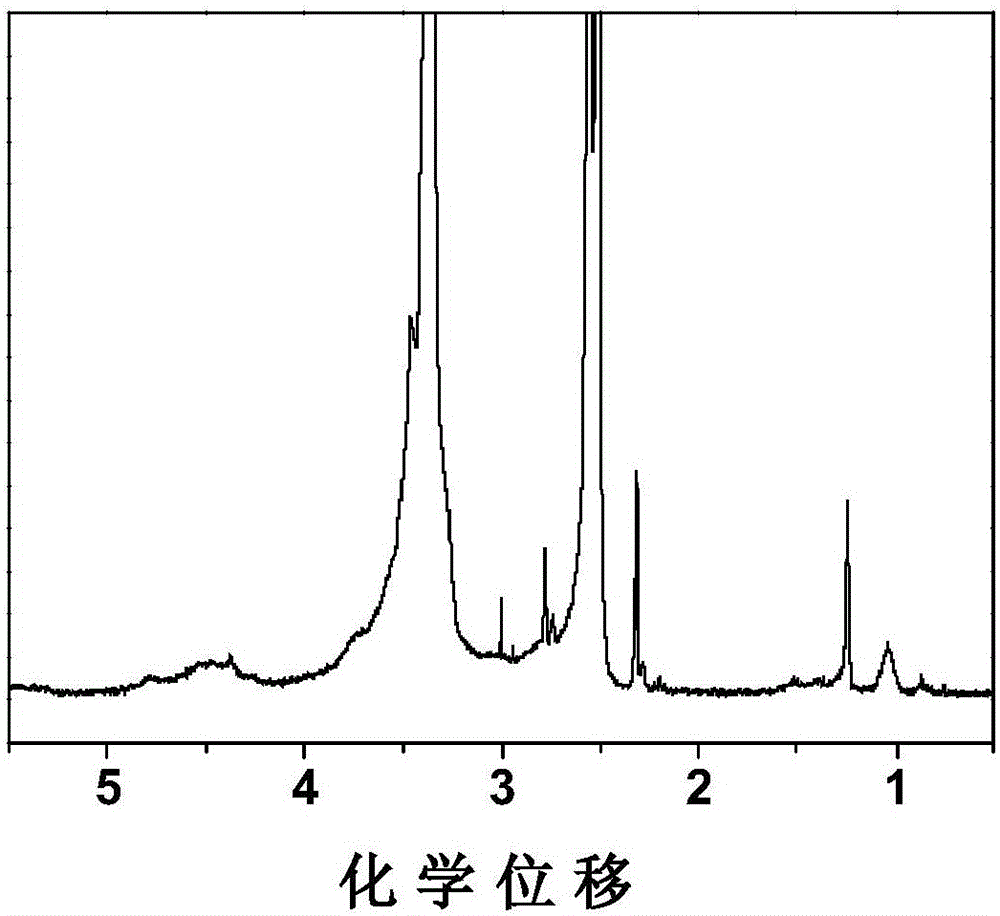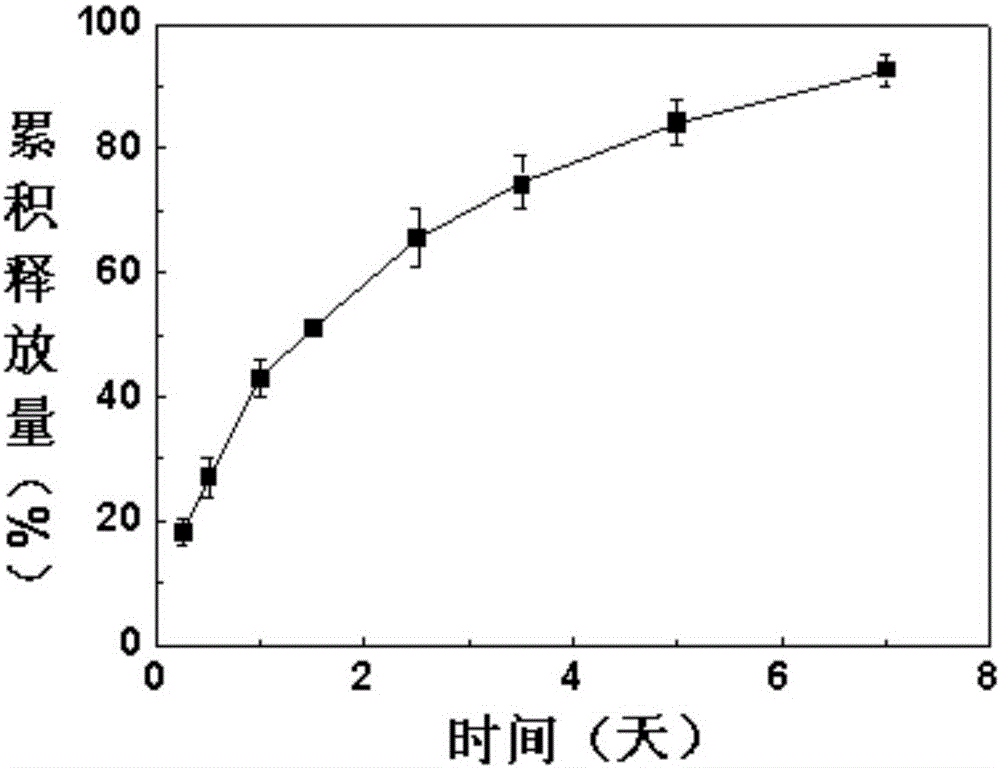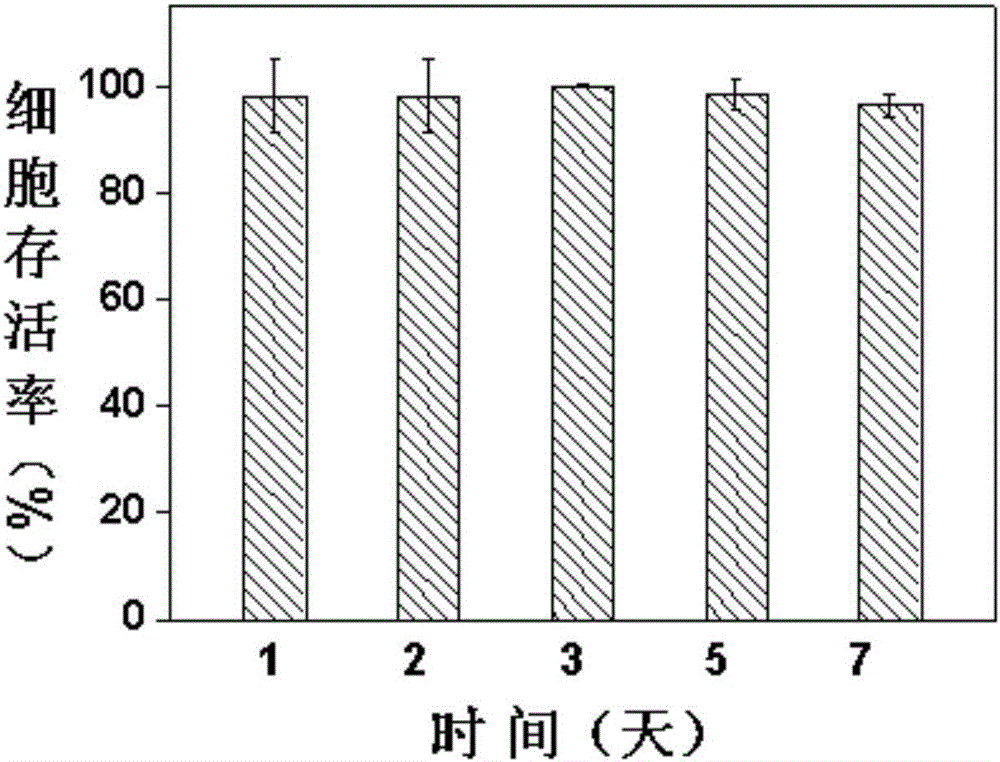Long-acting slow-release oral ulcer film and preparation method thereof
An oral ulcer and film-sticking technology, which is applied in the field of long-acting sustained-release oral ulcer film and its preparation, achieves the effects of convenient access, easy self-operation, and wide drug-carrying range
- Summary
- Abstract
- Description
- Claims
- Application Information
AI Technical Summary
Problems solved by technology
Method used
Image
Examples
preparation example Construction
[0042] The preparation method of anhydrous DMSO: add 1 gram of calcium hydride to 500 mL of dimethyl sulfoxide and stir for 12 hours, then filter with a sand core funnel to obtain anhydrous dimethyl sulfoxide.
[0043] The preparation method of dry caprolactone monomer: add 1 gram of calcium hydride to 500 mL of caprolactone monomer and stir for 12 hours, then filter with a sand core funnel to obtain dry caprolactone monomer.
[0044] The drying method of the modified cellulose: place the modified cellulose in a vacuum oven and dry at 70° C. for 16 hours.
Embodiment 1
[0046] (1) Synthesis of hydroxyethyl cellulose grafted polycaprolactone copolymer:
[0047]Weigh 5 grams of dried hydroxyethyl cellulose and dissolve it in 30 mL of anhydrous dimethyl sulfoxide, raise the temperature to 40-60 °C until the hydroxyethyl cellulose dissolves; then add 0.1 gram of stannous octoate and 2 grams of dried The caprolactone monomer is raised to 80°C, filled with nitrogen in the reaction bottle for 15 minutes, then heated to 120°C, and reacted for 12 hours under a nitrogen atmosphere; after the reaction, the product is precipitated twice in 150 mL of n-hexane, and then heated Under the condition of vacuum drying for 24 hours, the hydroxyethyl cellulose grafted polycaprolactone copolymer was obtained.
[0048] (2) Preparation of oral ulcer patch:
[0049] a. Dissolving hydroxyethyl cellulose in 95% ethanol solution with a mass fraction of 4%, forming a film on a horizontally clean glass plate coated with a little liquid paraffin, and drying at 50°C to obt...
Embodiment 2
[0053] (1) Synthesis of hydroxypropyl methylcellulose grafted polycaprolactone copolymer:
[0054] Weigh 5 grams of dried hydroxypropylmethylcellulose and dissolve it in 30mL of anhydrous dimethyl sulfoxide, raise the temperature to 40-60°C until the hydroxypropylmethylcellulose is dissolved; then add 0.1g of stannous octoate and 2g After drying the caprolactone monomer, heat up to 80°C, fill the reaction bottle with nitrogen for 15 minutes, then heat up to 120°C, and react under nitrogen atmosphere for 12 hours; after the reaction, the product is precipitated twice in 150mL of n-hexane, and then in Vacuum drying at 60° C. for 24 hours to obtain a hydroxypropylmethylcellulose grafted polycaprolactone copolymer.
[0055] Weigh 3 mg of the obtained copolymer and dissolve it in 0.5 mL of deuterated dimethyl sulfoxide. The obtained sample was characterized by H NMR, and the results were as follows: figure 1 . figure 1 The peaks corresponding to the chemical shifts at 2.50 and 3...
PUM
| Property | Measurement | Unit |
|---|---|---|
| Total thickness | aaaaa | aaaaa |
Abstract
Description
Claims
Application Information
 Login to View More
Login to View More - R&D
- Intellectual Property
- Life Sciences
- Materials
- Tech Scout
- Unparalleled Data Quality
- Higher Quality Content
- 60% Fewer Hallucinations
Browse by: Latest US Patents, China's latest patents, Technical Efficacy Thesaurus, Application Domain, Technology Topic, Popular Technical Reports.
© 2025 PatSnap. All rights reserved.Legal|Privacy policy|Modern Slavery Act Transparency Statement|Sitemap|About US| Contact US: help@patsnap.com



